When the leaves started to change colors in Susquehanna County, Conservator of Objects and Sculpture, Christina L. Simms, of McKay Lodge Conservation Laboratory completed the maintenance of a bronze memorial commemorating Pennsylvanian coal miners and their families.
The Coal Miners Memorial by artist Martin Heffron is composed of a series of bronze reliefs welded together and set into a stone wall. The artwork features abstract, dynamic images from coal mining life and production executed in high relief.
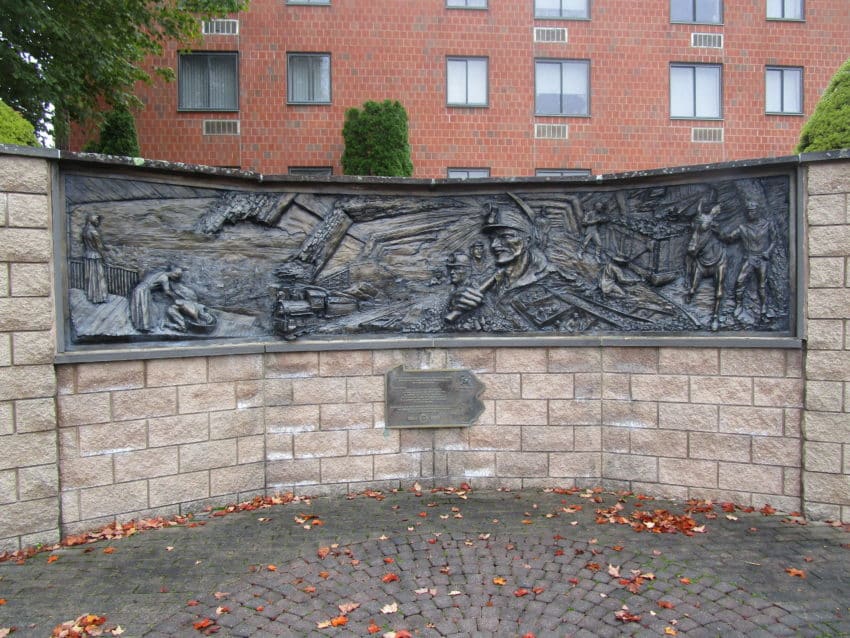
As the plaque below the sculpture describes, “you gave us your tired, your poor, your huddled masses some settled in what the world recognizes as the hard coal region…in memory of: those who built our small towns labored and died in the mining industry to provide for a better tomorrow…”
The bronze memorial is located just off Main Street in Forest City, close to another sculpture of a World War I Doughboy treated the same week by conservator Christina L. Simms and Conservation Technician, Curtis McCartney.
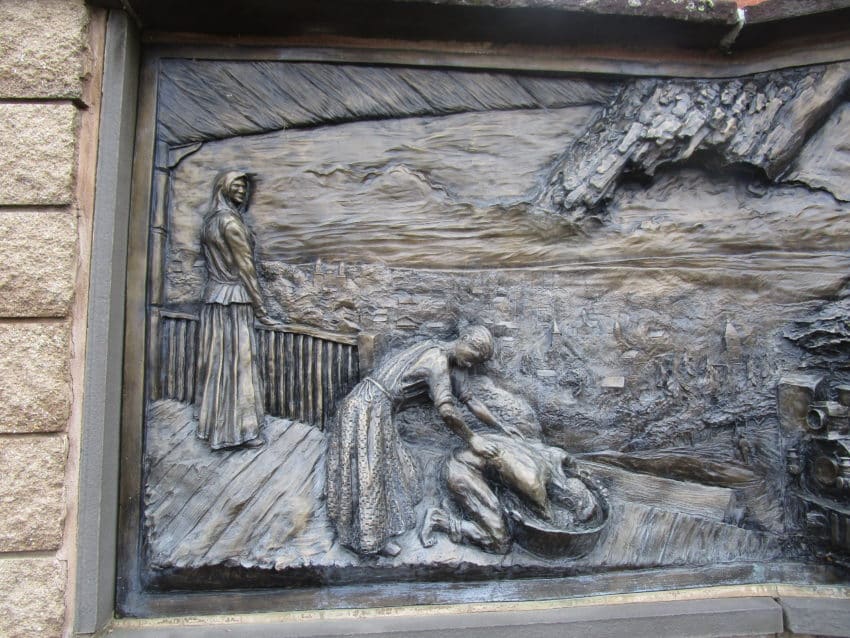
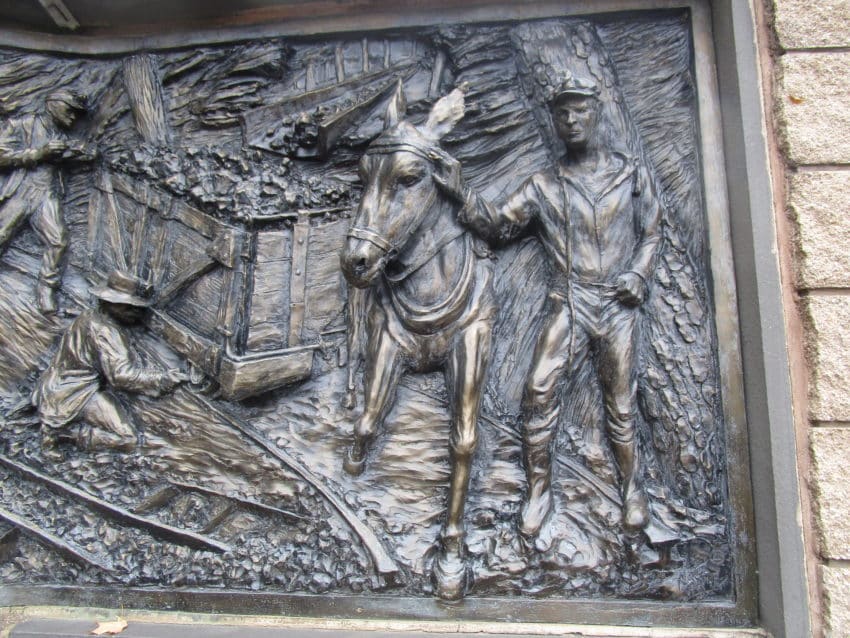
The Doughboy sculpture required a more involved conservation treatment, but the Coal Miners Memorial was in excellent condition, despite its outdoor exposure to the harsh Pennsylvania winters for the last twenty-five years. Maintenance of the bronze memorial only required a washing and reapplication of a protective coating.
The surface appeared to have been coated with an acrylic resin, likely Incralac, which is often applied to bronze outdoor sculpture. This coating had begun to fail over the years.
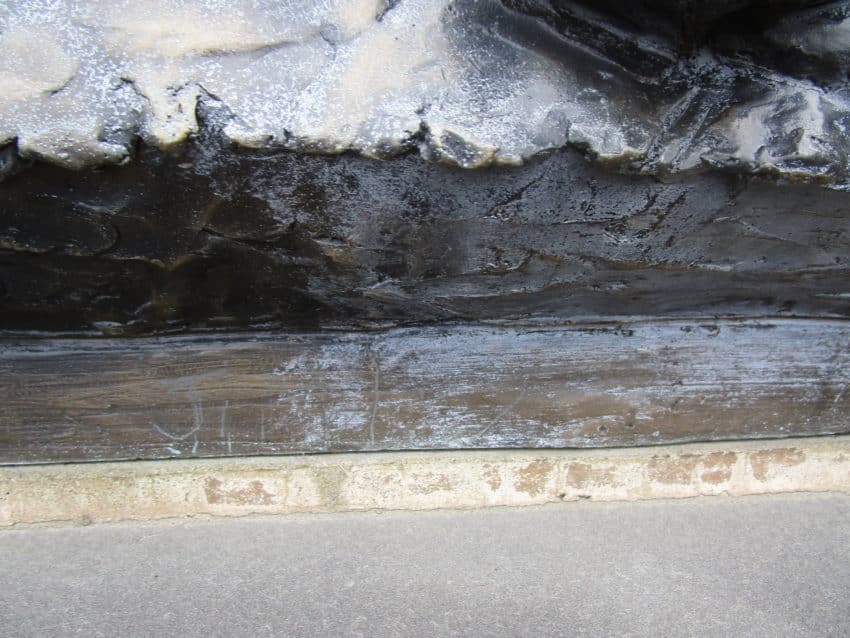
Coating failure is evident by blanching on the surface as well as areas of preferential corrosion. These areas are visible as little spots of blue-green corrosion on the bronze. Some graffiti was also scratched into the coating, which is not unusual for a public sculpture. If left untreated, the blanching and corrosion only progresses. Maintenance of the bronze memorial was therefore critical in order to preserve its appearance and the bronze substrate.
In some cases, rather than performing a complete removal of the Incralac it is possible to simply apply wax with heat over the failed resin. The solution is more cost-effective for the maintenance of this bronze memorial, and it is arguably easier to maintain over the next several years.
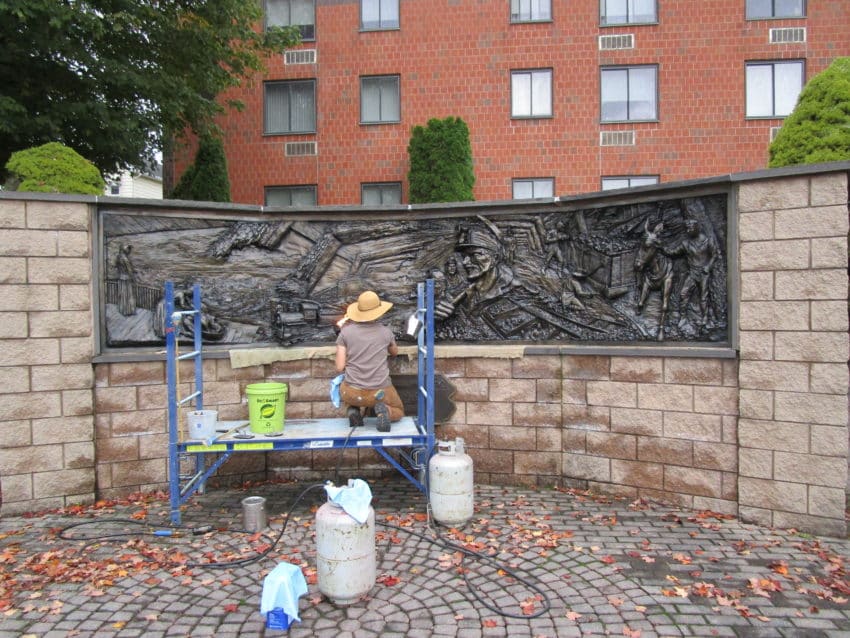
The surface was first pressure washed to remove dirt, debris, and friable coatings. Conservator Simms then applied a protective wax coating with heat. As she applied the wax, the dull surface was revitalized. The heat applied wax coating saturated most of the surface inconsistencies.
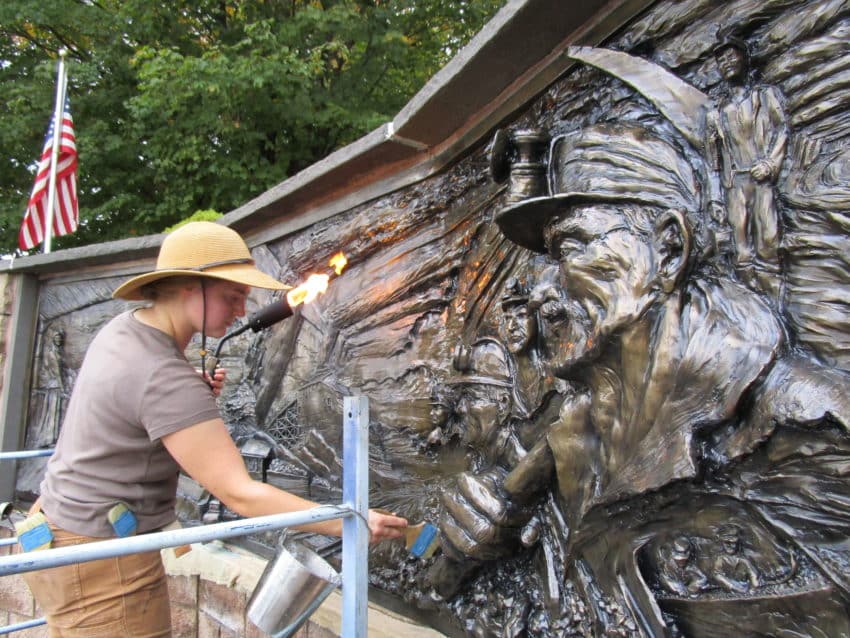
The coating should last approximately 3-5 years after the maintenance of the bronze memorial for the Coal Miners Memorial. In addition to protecting the metal from further corrosion, the protective coating also reanimates many of the intricate details which were obscured by the blanched coating.
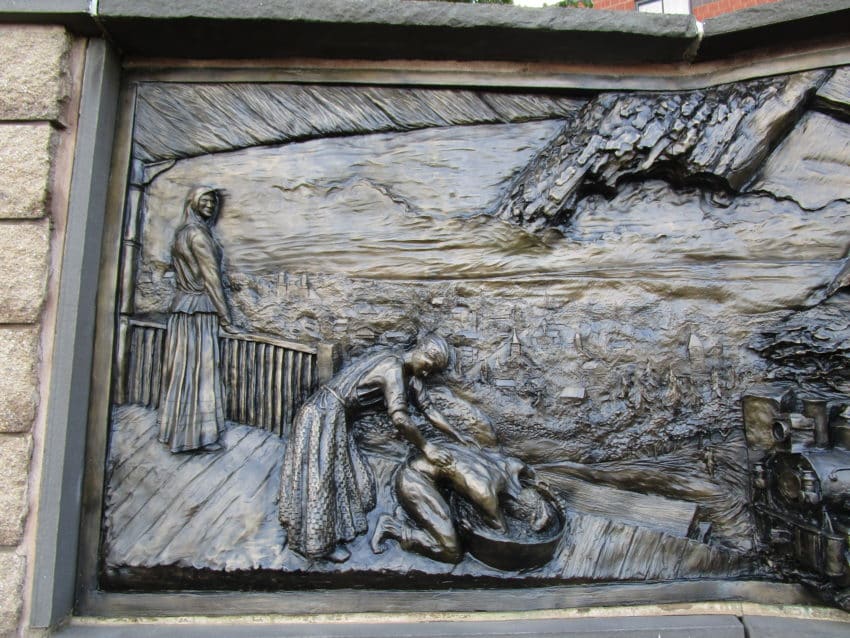
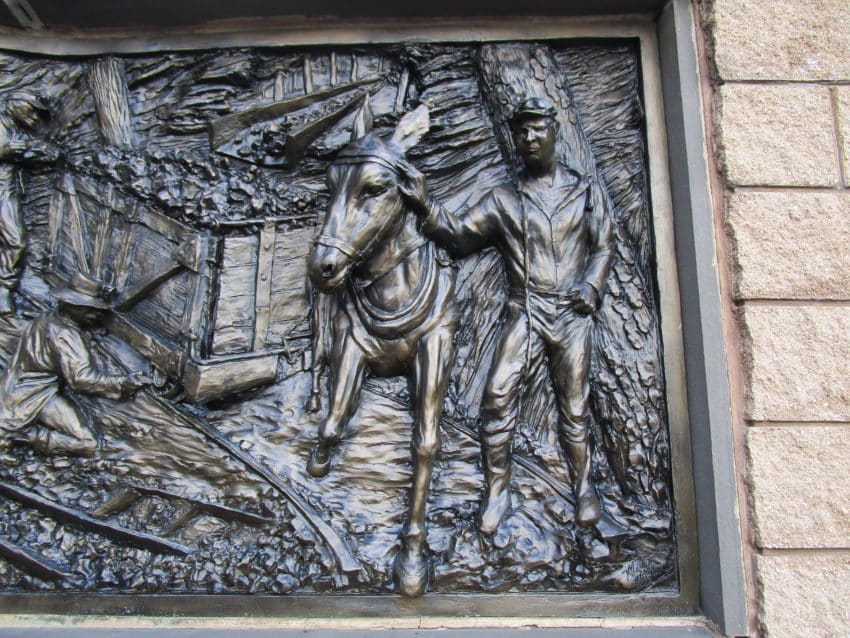
The maintenance of the bronze memorial was particularly special for conservator Simms since she is the granddaughter of a coal miner. Her late grandfather, Hubert Hodge Shreve, worked as a lumberjack then as an underground coal miner in the early to mid 20th century in West Virginia, a six hour drive southwest of the Hard Coal region today.
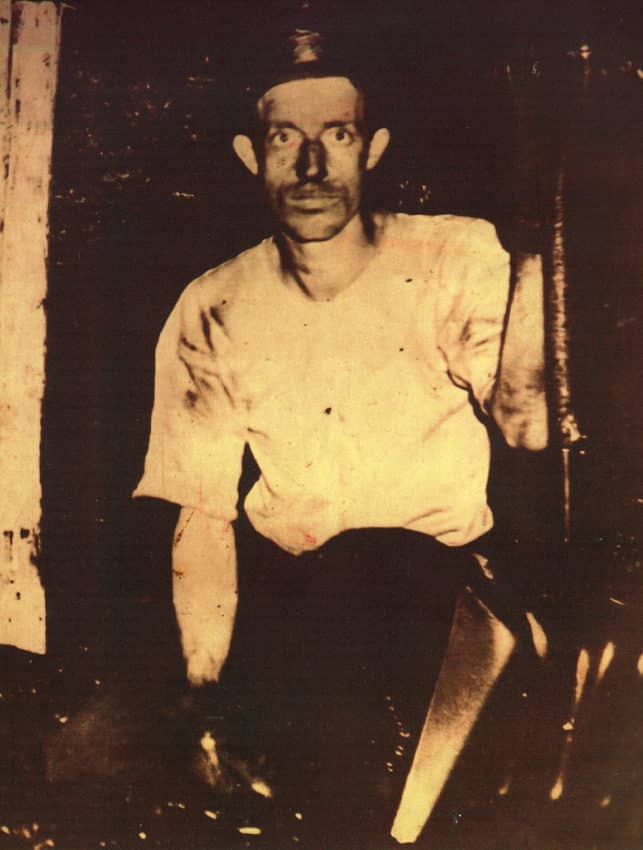
The Hard Coal or Anthracite Coal Region consists of several counties in Northeastern Pennsylvania: Carbon, Columbia, Lackawanna, Luzerne, Northumberland, and Schuylkill. The coal mining industry in this area was prolific in the 19th and early 20th century.
The coal mining industry attracted immigrants from many different countries, especially from the British Isles and Germany. Other ethnic groups followed including Polish, Slovak, Ruthenian, Ukrainian, Hungarian, Italian, Russian and Lithuanian immigrants. You can learn more about the people of this region here, or learn more about anthracite coal.
While there are many good mining stories, conditions in the mines- and sometimes the companies who ran them- were harsh, leading to many labor strikes and rebellions throughout the years. Alternative energies and technological advancements began to overtake coal as the main source of fuel in America by the 1950s. Though coal is still mined in 26 of the 50 states, it can be a divisive topic.
With the decline of the coal industry, Shreve moved his family to Ohio in 1952-3, where the rest of his nine children were raised. After retiring from Ford, Shreve regaled his young granddaughter with stories of coal mining, Appalachia, and his time abroad as World War II paratrooper. Simms inspired by his hard-work later fulfilled her dream of becoming an Art Conservator.
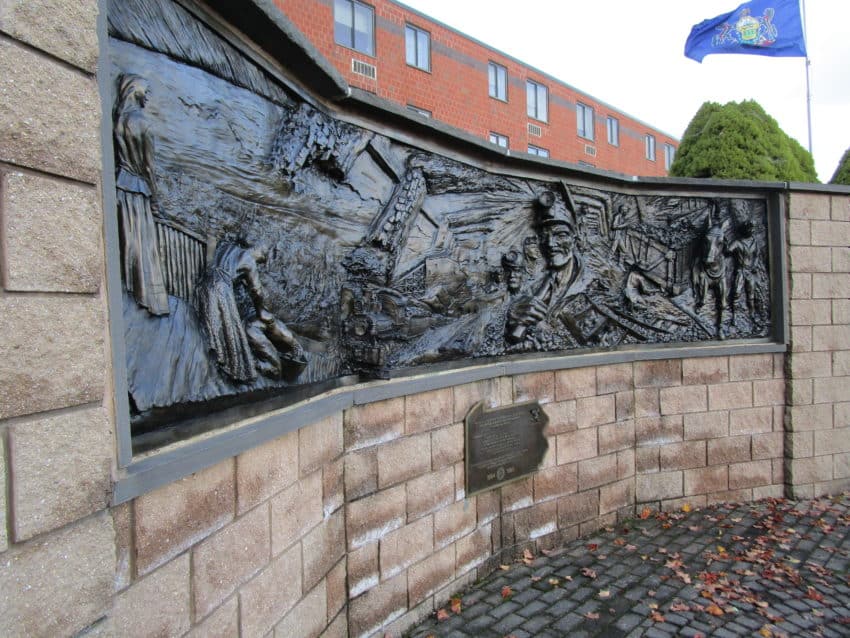
The hard-work of coal miners for a better tomorrow is remembered by many others across this nation, including the community of Forest City, Pennsylvania. The Coal Miners Memorial was made possible by the local Rotary Club in 1994-1995. It is just steps from Main Street, and worth a stop if you find yourself driving through the area. After all, Fall is the perfect time to visit the surrounding region.
